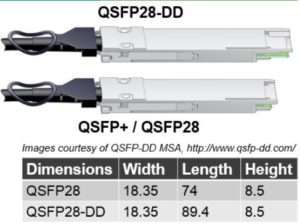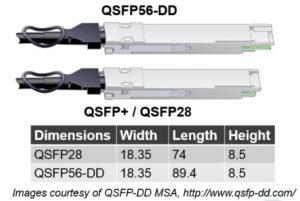Fine Tuning The Sales Rep/Sales Engineer Dynamic

If you have been a Sales Rep or Sales Engineer for more than 5 minutes the following semi-fictional scenario should be all to familiar for you in some ways.
You are in the lobby of Acme Corp, a potential prospect who you’re meeting with for the first time. You are all signed in and waiting for your contact to bring you up to the conference room for the meeting. They are of course running late. Then once ushered into the conference room you need to wrestle with the media connector for projecting to the folks in the room and of course with the guest WiFi so that folks who are remote can join the web conference session. Now comes the obligatory round of introductions and making sure that the folks who are remote on the bridge can hear you and see your slide presentation.
You had originally requested a 1 hour meeting time slot to cover intros, 30 mins of content and 10-15 mins of QA, but are now already running 20-25 mins late. You and your counterpart feel the pressure as you now need to scramble in order to still pull off a successful meeting.
The introductions are over and now Sam the Sales Rep takes over and what ensues is a litany of buzzwords, current customer name dropping and bold claims of solving very specific problems. One of these immediately strikes accord with the prospect who then asks for specifics on how your solution can deliver on that. Sam the Sales Rep then turns to Steve the SE and asks him to explain exactly how they can do it. What happens next will define whether this meeting has a chance of being successful or not.
Steve the SE panics a bit as he thought he would have 30 mins to give the customer a really good idea of what the product/solution does and how it could benefit Acme Corp. Instead Steve feels compelled to get down into the weeds right out the gate. What Steve really wants to say, but clearly thinks better of it, is “Sam, you’ve been doing a great job explaining this already…I think you’ve got this…go ahead and explain how we do XYZ”. Wanting to be generally helpful and show that he is knowledgeable about the solution, Steve starts to explain how they can potentially solve problem XYZ to the customer. This doesn’t go well at all as Steve has to keep zooming out a bit to explain different aspects of how the product works and what it does in order for the customer to even begin to understand how the it will solve for XYZ. Each customer question taking him further down a rathole and farther away from the high level overview and value proposition he had wanted to start with. He is clearly and visibly off his game plan and uncomfortable with the way things are going yet as an Engineer he feels compelled to keep answering the technical questions.
Suddenly there is only 8-10 mins left in the meeting. Sam the Sales Rep interrupts with a time check and asks if there are any other key questions and what the next steps should be. Meanwhile, the prospect never did get the basic understanding of what the product does as a whole and what problems it was designed to help them solve. They only have bits and pieces based on what questions they asked and perhaps will leave the room thinking that the vendor’s solution is very niche and only really does the one thing they’ve spent the last 20 or so mins talking about.
The prospect responds with “we will need to discuss this internally afterwards and see if this is something that we would be interested in pursuing”… the Sales Rep/Sales Engineer tandem completley missed the mark with this meeting.
Sales Rep’s perspective of the meeting:
Knowing we didn’t have a lot of time left I managed it by getting right to the point and telling them how great we are and how we can save them tons of money on XYZ. I needed to find something that would stick so that we could get them to agree to a next step of some kind. Then my SE droned on and on about how we actually do it. They kept asking a lot of questions, but didn’t really seem to get the big picture though. I don’t think we should have spent that much time talking about the technical bits as they seemed to indicate that they werent all that interested.
Sales Engineer’s perspective of the meeting:
We should have just stuck to the plan and given the basic technical overview and then let them ask us their questions. Sam’s buzzword bingo and bold claims of how can we can help them got us off track right away and we ran out of time as I answered all their technical questions. I still don’t know what product/service they are using today and why they would even entertain pursuing something else.
Reality of the meeting:
They were both wrong and stuck to their preconceived notion of what their role in the meeting should be. Neither did anything to really keep the meeting focused and on track and headed towards a successful outcome. This is not a Sales Rep/Sales Engineer tandem that is going to be very successful.
On the Sales Rep side Sam could have just briefly introduced the company and what the product/solution was designed to do at a high level while perhaps mentioning previous success with some of Acme’s industry peers in using the product/solution. It would be good if Sam actually asked them what they were utilizing today, potential problems they were having with the current model or approach and where they see themselves trying to get to in order to be successful. At this point Sam should be indicating that Steve would then walk them through the details of how it’s done, talking specifically to their desired end state and goals while answering any questions they have.
On the Sales Engineer side, Steve could have gently pushed back and said “before we get too deep into how we do the specifics around XYZ, lets make sure that you have a firm understanding of what we do as a whole and why we feel it’s different….I’d also like to make sure we understand the problems you face so that we can focus more on the aspects of the solution that could potentially benefit Acme Corp”. This is the difference between an Engineer who understands all the “nerd knobs” of how a product works and a Sales Engineer who can articulate how the product can solve real business problems for the prospect.
Some key attributes of a successful Sales Rep/SE tandem are knowing your respective role in this partnership, how to play off of each other and above all trust. To a degree you also have to be able to do a little bit of each other’s job if and when needed. If your SE isn’t able to understand how the problems your product/solution solves matters to the prospect’s business and how to work that into the presentation then they are an Engineer not a Sales Engineer. If your Sales Rep can’t set the table and explain at high level what your product does and why it matters in 5 mins or less then they shouldn’t be in Sales. Sales Reps will often encounter prospects without their SE around to provide cover and need to know just enough about the product to quickly cut to the chase on whether there is a real opportunity there or not to pursue. Although rare, Sales Engineers should be able to move a meeting with a prospect along without their Sales Rep counterpart. This means being able to drive a meeting towards a meaningful next step, not just explaining how the tech works.
So what could have happened here that might have saved this meeting?
Hint: All of this could have been prevented before they even arrived at Acme Corp
1.) Define A Successful Outcome
In a very brief pre-meeting, define what a successful outcome for Acme Corp meeting should look like that way the Sales Rep/Sales Engineer tandem can be more flexible in adjusting on the fly to accomdate the desired outcome. Are you trying to getting another meeting at Acme with a different team/group or decision maker? Are you trying to move them towards a trial or pilot? Are you just trying to see if there is even an opportunity here at all?
2.) Set The Table
Define what should be covered and to what depth in the initial introduction of your company and it’s product/solution and who is going to actually do it. Strike a balance right out of the gate between a very high level intro of what you do and what problems you can help solve to ensure there is interest and then indicate that you will walk them through the specifics as the meeting progresses. Avoid bold claims and assumptions about what the customer needs as you just don’t know yet. Everyone says their router/switch is faster and scales better than every other competitor’s. Every security vendor says their product is more secure than the other guy’s. If you don’t know what they are doing and using today and why then you just sound like every other vendor that walked through the door.
3.) Do Discovery
What is the customer doing today, how are they doing it, why are they doing it that way and what are the big challenges they are trying to solve? Take mental (as well as physical ) notes on this as you can then work these in as truly relevant examples as you explain what your product/solution does and how it can potentially help Acme Corp.
4.) Play Off Of Each Other
If you’ve done #2 and #3 right you can refer back to each other’s previous statements and relate the tech back to the business or the business back to the tech. Not only while you look and sound more like a Sales tandem, but you clearly are now able to reinforce the value proposition of your product while pleasing the technical and operational stakeholders too. “Like Sam said in the begining about being able to potentially save you as much as 40% on your costs of XYZ while streamlining and simplifying the way you run things today, this is the way we would go about helping you achieve that” or “This particular feature set Steve is explaining is how Big Global Corp saved N% on their annual cost of XYZ”.
5.) Manage Your Time
Meetings rarely ever start or end on time or go off without a prospect being called out of the meeting for something critical. Both Sales Rep and SE have an equal role to play in making sure the pre-agreed upon requirements are being hit to lead to the desired successful outcome. This really goes back to #2 in making sure that you set the table well enough that the prospect leaves the meeting knowing exactly what you can do and to #3 in that based on what they do today and where they want to be you are armed with clear examples of how you can potentially help them. This is how you are going to get to a successful outcome when you ask them for that next step of another meeting or to kick-off a trial/pilot of your product.
Spend some time with your Sales Rep or Sales Engineer and discuss the roles each of you will play in scripting out a successful meeting. Build a story of who your company is and what you do that doesn’t require any slides. This way you can easily adapt on the fly and quickly get your message across when the projector or virtual meeting system doesn’t work properly. Practice, execute and refine it as much as needed.
Disclaimer: The views expressed here are my own and do not necessarily reflect the views of my employer Zscaler, Inc.













